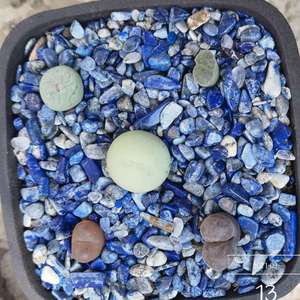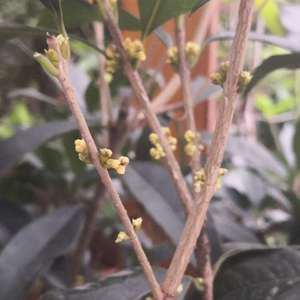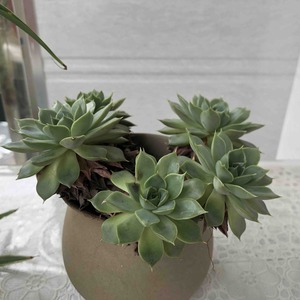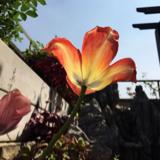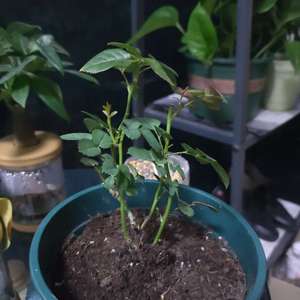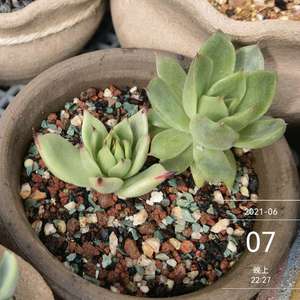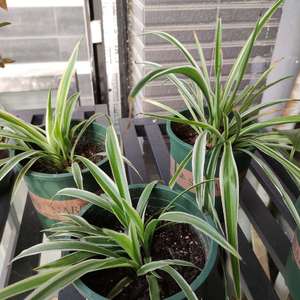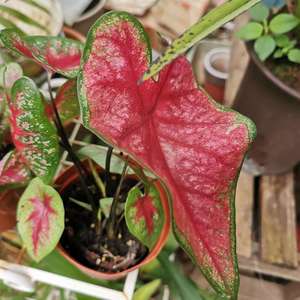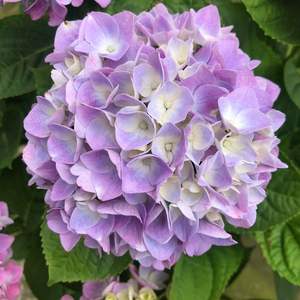文章
Miss Chen
2021年10月14日

The bigleaf magnolia (Magnolia macrophylla) can be a stunning addition to the landscape. The oblong to obovate leaves on this magnolia tree can measure up to 3 feet long and 1 foot wide, hence the species name of macrophylla, which is Latin for "large leaves." The leaves are medium green on top and a silvery color on their undersides. The tree bears fragrant white flowers that are equally impressive and massive, with a span of roughly 8 to 12 inches. Even the elongated red fruits that follow the flowers offer visual interest. The fruits also are popular with birds and other wildlife.
The tree has a moderate growth rate, gaining around a foot per year and forming a pyramidal shape. It can be planted in the fall or early spring.
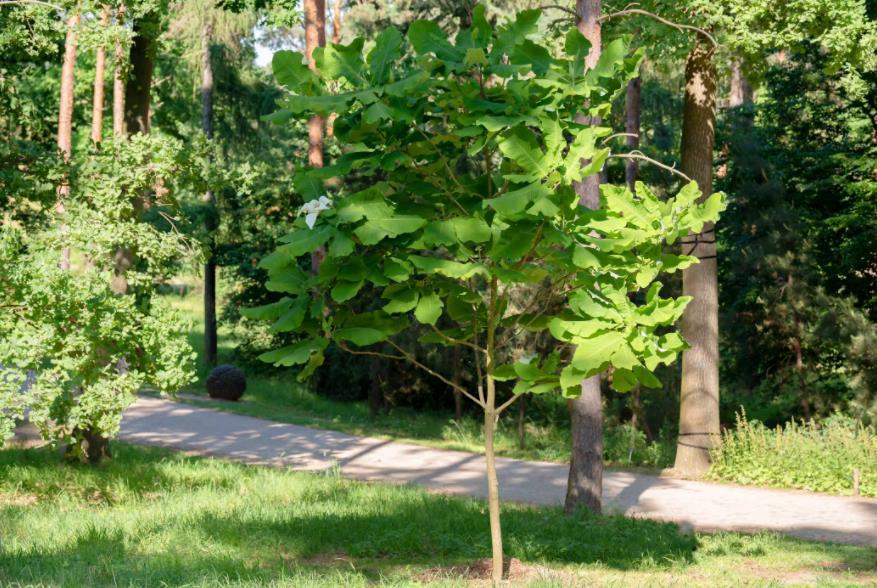
Botanical Name Magnolia macrophylla
Common Names Bigleaf magnolia, large-leaved cucumber tree, great-leaved macrophylla, umbrella tree
Plant Type Tree
Mature Size 30–40 ft. tall and wide
Sun Exposure Full, partial
Soil Type Loamy, moist, well-drained
Soil pH Acidic, neutral
Bloom Time Late spring to early summer
Flower Color Creamy white with purple petal bases
Hardiness Zones 5–8 (USDA)
Native Area Caribbean, North America, Central America
Bigleaf Magnolia Care
Bigleaf magnolias are easy to care for when grown in optimal conditions. They do not suffer from any serious pest or disease issues, nor do they require regular pruning to maintain their shape. If you do need to prune to remove a misshapen branch, try to do so in the late winter or early spring. This will prevent the sap from bleeding. Remove any dead, damaged, or diseased branches as they arise.
A drawback of bigleaf magnolias is it can take a decade or longer for them to begin to produce blooms. Also, because the leaves are so large, raking them can be quite a chore in the fall. Furthermore, they are fairly fussy about the soil in which they grow. They do not like very dry or very wet ground. And they are intolerant of pollution, meaning they do not make good street trees.
Light
Bigleaf magnolia trees need a site that has full sun to part shade. Two to five hours of direct sunlight each day is typically sufficient.
Soil
These trees prefer conditions that mimic their native woodland habitat. Loamy soil that is high in organic matter and drains well is ideal. And a slightly acidic to neutral soil pH is best.
Water
Bigleaf magnolias don't do well in soggy or bone dry soil. Always allow the soil to dry out somewhat between waterings, but never allow it to stay dry for too long. Water when the top inch of soil is dry to the touch. Bigleaf magnolias grown in exceptionally well-draining soil will need more frequent watering than trees grown in slow-draining soil types.
Temperature and Humidity
The bigleaf magnolia tolerates the temperature highs and lows of its growing zones well. Humidity also typically is not an issue as long as the tree's moisture requirements are met. A layer of mulch around the tree can help to keep the roots cool and retain soil moisture. One specific climate requirement of bigleaf magnolia trees is a location that does not experience strong winds. Because the leaves of this tree are so large, they are easily damaged by wind gusts.
Fertilizer
When grown in organically rich soil, bigleaf magnolias often don't need supplemental fertilizer. Signs that fertilizer is necessary include weak new growth in the spring and significant dieback. Use a slow-release fertilizer with a balanced formulation, and apply it during late spring or early summer
Bigleaf Magnolia Varieties
The bigleaf magnolia has been divided into three subspecies that some people treat as separate species. They are:
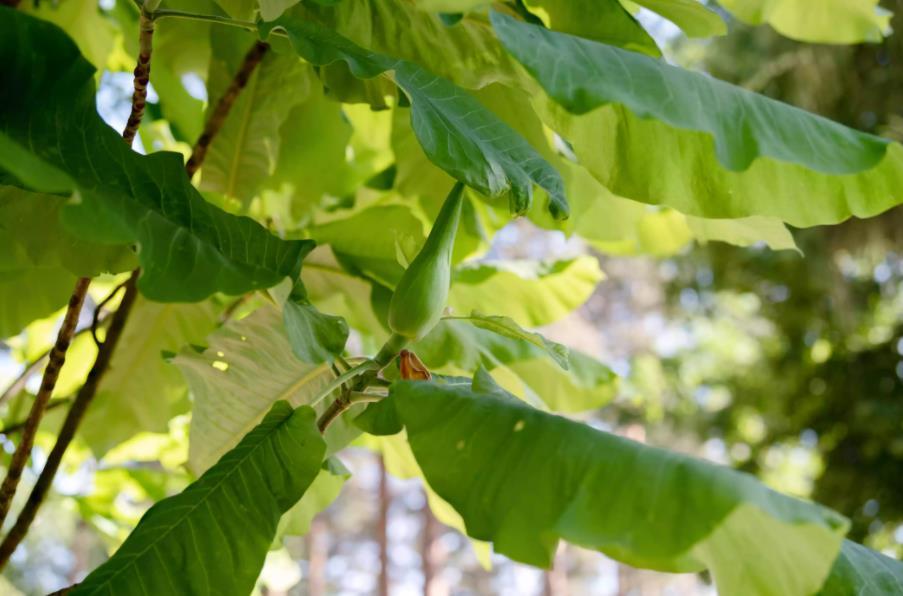
Magnolia macrophylla subsp. macrophylla: Known also as bigleaf magnolia, this tree sports leaves that can stretch from 20 to 36 inches long. And the tree itself can grow more than 60 feet tall.
Magnolia macrophylla subsp. ashei (also Magnolia ashei): Known as the Ashe magnolia, this tree can grow up to 40 feet high. And its leaves stretch around 10 to 24 inches long.
Magnolia macrophylla subsp. dealbata (also Magnolia dealbata): This tree has two common names: the Mexican bigleaf magnolia and the cloud forest magnolia. It can grow more than 60 feet high with leaves around 1 to 2 feet long. Its fruits also are fairly large at around 3 to 6 inches long.
Propagating Bigleaf Magnolia
Most growers prefer buying bigleaf magnolia trees from nurseries, but the trees can also be grown from seed. Collect ripe, fallen fruit from the ground, and remove the flesh, leaving only the seeds. Clean seeds can be stored in an airtight container in the refrigerator. Sow the seeds in the fall, but be aware that bigleaf magnolia seeds are known for having low seed viability. If you're not keen on trying your luck with the seeds, bigleaf magnolias can also be propagated via rooting softwood cuttings in the summer.
The tree has a moderate growth rate, gaining around a foot per year and forming a pyramidal shape. It can be planted in the fall or early spring.

Botanical Name Magnolia macrophylla
Common Names Bigleaf magnolia, large-leaved cucumber tree, great-leaved macrophylla, umbrella tree
Plant Type Tree
Mature Size 30–40 ft. tall and wide
Sun Exposure Full, partial
Soil Type Loamy, moist, well-drained
Soil pH Acidic, neutral
Bloom Time Late spring to early summer
Flower Color Creamy white with purple petal bases
Hardiness Zones 5–8 (USDA)
Native Area Caribbean, North America, Central America
Bigleaf Magnolia Care
Bigleaf magnolias are easy to care for when grown in optimal conditions. They do not suffer from any serious pest or disease issues, nor do they require regular pruning to maintain their shape. If you do need to prune to remove a misshapen branch, try to do so in the late winter or early spring. This will prevent the sap from bleeding. Remove any dead, damaged, or diseased branches as they arise.
A drawback of bigleaf magnolias is it can take a decade or longer for them to begin to produce blooms. Also, because the leaves are so large, raking them can be quite a chore in the fall. Furthermore, they are fairly fussy about the soil in which they grow. They do not like very dry or very wet ground. And they are intolerant of pollution, meaning they do not make good street trees.
Light
Bigleaf magnolia trees need a site that has full sun to part shade. Two to five hours of direct sunlight each day is typically sufficient.
Soil
These trees prefer conditions that mimic their native woodland habitat. Loamy soil that is high in organic matter and drains well is ideal. And a slightly acidic to neutral soil pH is best.
Water
Bigleaf magnolias don't do well in soggy or bone dry soil. Always allow the soil to dry out somewhat between waterings, but never allow it to stay dry for too long. Water when the top inch of soil is dry to the touch. Bigleaf magnolias grown in exceptionally well-draining soil will need more frequent watering than trees grown in slow-draining soil types.
Temperature and Humidity
The bigleaf magnolia tolerates the temperature highs and lows of its growing zones well. Humidity also typically is not an issue as long as the tree's moisture requirements are met. A layer of mulch around the tree can help to keep the roots cool and retain soil moisture. One specific climate requirement of bigleaf magnolia trees is a location that does not experience strong winds. Because the leaves of this tree are so large, they are easily damaged by wind gusts.
Fertilizer
When grown in organically rich soil, bigleaf magnolias often don't need supplemental fertilizer. Signs that fertilizer is necessary include weak new growth in the spring and significant dieback. Use a slow-release fertilizer with a balanced formulation, and apply it during late spring or early summer
Bigleaf Magnolia Varieties
The bigleaf magnolia has been divided into three subspecies that some people treat as separate species. They are:

Magnolia macrophylla subsp. macrophylla: Known also as bigleaf magnolia, this tree sports leaves that can stretch from 20 to 36 inches long. And the tree itself can grow more than 60 feet tall.
Magnolia macrophylla subsp. ashei (also Magnolia ashei): Known as the Ashe magnolia, this tree can grow up to 40 feet high. And its leaves stretch around 10 to 24 inches long.
Magnolia macrophylla subsp. dealbata (also Magnolia dealbata): This tree has two common names: the Mexican bigleaf magnolia and the cloud forest magnolia. It can grow more than 60 feet high with leaves around 1 to 2 feet long. Its fruits also are fairly large at around 3 to 6 inches long.
Propagating Bigleaf Magnolia
Most growers prefer buying bigleaf magnolia trees from nurseries, but the trees can also be grown from seed. Collect ripe, fallen fruit from the ground, and remove the flesh, leaving only the seeds. Clean seeds can be stored in an airtight container in the refrigerator. Sow the seeds in the fall, but be aware that bigleaf magnolia seeds are known for having low seed viability. If you're not keen on trying your luck with the seeds, bigleaf magnolias can also be propagated via rooting softwood cuttings in the summer.
0
0
文章
Miss Chen
2021年10月05日

Becky shasta daisies (Leucanthemum x superbum 'Becky') are a cultivar of the hybrid shasta daisies. They grow larger than several of the other shasta cultivars, sporting many long-lasting, showy flowers that stretch roughly 3 to 4 inches across. The blooms have a classic daisy look with white petals around a central bright yellow disk. Becky shasta daisies rise up on rigid stems that bear leathery, lance-shaped green leaves. These flowers have a fast growth rate and can be aggressive spreaders in the garden if you let them freely sow their seeds. They can be planted in the spring or early fall.
Botanical Name Leucanthemum x superbum 'Becky'
Common Name Becky shasta daisy
Plant Type Herbaceous, perennial
Mature Size 3–4 ft. tall, 2–3 ft. wide
Sun Exposure Full
Soil Type Well-drained
Soil pH Neutral
Bloom Time Summer
Flower Color White with a yellow center
Hardiness Zones 5–9 (USDA)
Native Area Hybrid developed in North America
Toxicity Toxic to people and animals

Becky Shasta Daisy Care
When provided with the proper growing conditions, Becky shasta daisies don’t require much care. Even though these flowers grow fairly tall, they typically don’t require staking due to their rigid stems. They’re commonly used as borders, in mixed flower beds, and in cutting gardens (as they make a wonderfully long-lasting cut flower).
When the daisies are in bloom, deadheading (removing spent blooms) can help to promote additional flowering. Plus, removing the flower heads before they go to seed will prevent unwanted spread of the plants. Furthermore, every two to three years, plan to divide your plants to maintain their vigor. Simply dig up a clump and break it apart at its roots, keeping as many as possible intact. Then, replant the smaller clumps wherever you wish.
Light
Plant Becky shasta daisies in full sun, meaning at least six hours of direct sunlight on most days. This will result in the best flowering on the plants. However, in climates with especially hot summers, some light shade in the afternoon can be beneficial for the daisies. But if they are starting to look leggy, that can mean they aren't getting enough sun.
Soil
These flowers aren’t picky about their soil type as long as it has good drainage. Soil that remains wet for too long can cause root rot and ultimately be fatal to the plants.
Water
Becky shasta daisies have low to moderate water requirements, and they have fairly good drought tolerance. During their first growing season, water your daisies regularly to keep the soil lightly moist (but ensure that it doesn’t get soggy). After that, you typically will only need to water during prolonged periods of drought when your plants have noticeable signs of wilt.
Temperature and Humidity
These plants have fairly good heat and cold tolerance within their growing zones. But extremely high temperatures can stress the plants and hinder their blooming. Likewise, a late frost or freeze in the spring can injure the buds and prevent some blooming. A layer of mulch around the daisies can help to protect the roots from extreme temperature fluctuations. Humidity typically isn't an issue for Becky shasta daisies as long as they have good soil drainage.
Fertilizer
Becky shasta daisies typically don't need fertilizer unless you have very lean soil. But it can be beneficial to work some compost into the soil around your plants annually in the spring.

Shasta Daisy Varieties
There are multiple cultivars of shasta daisies besides 'Becky' including:
‘Esther Read’: This variety has pure white double flowers (having extra petals) with yellow centers.
‘Silberprinzesschen’: A compact plant, it only grows up to a foot tall but features profuse blooms that stretch about 3 inches across.
‘Snow Lady’: This is another compact variety that only reaches around a foot high and features the classic white daisy flowers, which stretch roughly 2.5 inches across.
‘Wirral Pride’: Double flowers adorn this variety which reaches around 1.5 to 2 feet tall.
Common Pests/Diseases
These daisies occasionally come down with a fungal disease called verticillium wilt, in which the plants quickly wilt and sometimes turn yellow first. It’s recommended to remove and destroy plants with this disease. They also are susceptible to leaf spot, a fungal disease that causes spots and damage to the foliage. This can be treated with a fungicide. Some common garden pests that might visit Becky shasta daisies include aphids and leaf miners, which can be treated with neem oil.
Botanical Name Leucanthemum x superbum 'Becky'
Common Name Becky shasta daisy
Plant Type Herbaceous, perennial
Mature Size 3–4 ft. tall, 2–3 ft. wide
Sun Exposure Full
Soil Type Well-drained
Soil pH Neutral
Bloom Time Summer
Flower Color White with a yellow center
Hardiness Zones 5–9 (USDA)
Native Area Hybrid developed in North America
Toxicity Toxic to people and animals

Becky Shasta Daisy Care
When provided with the proper growing conditions, Becky shasta daisies don’t require much care. Even though these flowers grow fairly tall, they typically don’t require staking due to their rigid stems. They’re commonly used as borders, in mixed flower beds, and in cutting gardens (as they make a wonderfully long-lasting cut flower).
When the daisies are in bloom, deadheading (removing spent blooms) can help to promote additional flowering. Plus, removing the flower heads before they go to seed will prevent unwanted spread of the plants. Furthermore, every two to three years, plan to divide your plants to maintain their vigor. Simply dig up a clump and break it apart at its roots, keeping as many as possible intact. Then, replant the smaller clumps wherever you wish.
Light
Plant Becky shasta daisies in full sun, meaning at least six hours of direct sunlight on most days. This will result in the best flowering on the plants. However, in climates with especially hot summers, some light shade in the afternoon can be beneficial for the daisies. But if they are starting to look leggy, that can mean they aren't getting enough sun.
Soil
These flowers aren’t picky about their soil type as long as it has good drainage. Soil that remains wet for too long can cause root rot and ultimately be fatal to the plants.
Water
Becky shasta daisies have low to moderate water requirements, and they have fairly good drought tolerance. During their first growing season, water your daisies regularly to keep the soil lightly moist (but ensure that it doesn’t get soggy). After that, you typically will only need to water during prolonged periods of drought when your plants have noticeable signs of wilt.
Temperature and Humidity
These plants have fairly good heat and cold tolerance within their growing zones. But extremely high temperatures can stress the plants and hinder their blooming. Likewise, a late frost or freeze in the spring can injure the buds and prevent some blooming. A layer of mulch around the daisies can help to protect the roots from extreme temperature fluctuations. Humidity typically isn't an issue for Becky shasta daisies as long as they have good soil drainage.
Fertilizer
Becky shasta daisies typically don't need fertilizer unless you have very lean soil. But it can be beneficial to work some compost into the soil around your plants annually in the spring.

Shasta Daisy Varieties
There are multiple cultivars of shasta daisies besides 'Becky' including:
‘Esther Read’: This variety has pure white double flowers (having extra petals) with yellow centers.
‘Silberprinzesschen’: A compact plant, it only grows up to a foot tall but features profuse blooms that stretch about 3 inches across.
‘Snow Lady’: This is another compact variety that only reaches around a foot high and features the classic white daisy flowers, which stretch roughly 2.5 inches across.
‘Wirral Pride’: Double flowers adorn this variety which reaches around 1.5 to 2 feet tall.
Common Pests/Diseases
These daisies occasionally come down with a fungal disease called verticillium wilt, in which the plants quickly wilt and sometimes turn yellow first. It’s recommended to remove and destroy plants with this disease. They also are susceptible to leaf spot, a fungal disease that causes spots and damage to the foliage. This can be treated with a fungicide. Some common garden pests that might visit Becky shasta daisies include aphids and leaf miners, which can be treated with neem oil.
0
0
文章
Miss Chen
2021年09月21日

Balloon flowers (Platycodon grandiflorus) are clump-forming perennials and members of the easy-to-grow bellflower family of plants although the blooms do not resemble bells. Instead, puffy, balloon-like buds swell up to produce the 2- to 3-inch star-shaped flowers. This easy-grower blooms all summer long with intense blue-violet flowers, but there are also cultivars with white and pink blooms. Balloon flowers are generally planted in the spring after the danger of frost has passed, growing quickly to bloom in the first year.
Common Name Balloon flower, Chinese bellflower, Japanese bellflower
Botanical Name Platycodon grandiflorus
Family Campanulaceae (bellflower)
Plant Type Herbaceous perennial
Mature Size 1– 2 1/2 ft. tall, 1–1 1/2 ft. wide
Sun Exposure Full sun to part shade
Soil Type Rich, loamy, medium moisture, well-draining
Soil pH 5.5–7.5 (acidic to slightly alkaline)
Bloom Time Summer
Flower Color Blue-violet, white, pink
Hardiness Zones 3–8 (USDA)
Native Area China, Korea, Japan, Russia
Balloon Flower Care
Balloon flowers make excellent plants for border gardens or rock gardens and the blooms attract pollinators such as bees and butterflies thanks to their wide-open petals. These perennials will self-sow their seed, though they aren't aggressive spreaders. Overall, balloon flowers are fairly low-maintenance plants and are quite pest- and disease-resistant outside of root rot in areas with large amounts of rainfall.1
The taller varieties of balloon flowers can become a bit floppy. You can stake them or plant them in clumps to let them support one another. Start with nursery plants or grow your balloon flowers from seed.
Light
You will get the most flowers if you plant balloon flowers in full sun (at least six hours of sunlight on most days). However, they will be fine in part shade and might actually prefer some shade from where the afternoon sun is especially hot.
Soil
Balloon flowers prefer organically rich, loamy soil that has good drainage. They don’t grow well in dense soil, such as clay. They like a soil pH in the 5.5 to 7.5 range.
Water
Keep the soil of young plants consistently moist but not soggy. Once established, balloon flowers like a moderate amount of moisture in the soil, but they can tolerate short periods of drought. They won’t need a lot of supplemental watering unless you have a long period without rainfall that causes the soil to dry out.
Temperature and Humidity
Balloon flowers are hardy and do well in USDA growing zones 3 to 8. Their ideal temperature range is between 60 and 80 degrees Fahrenheit, but they can withstand higher temperatures if they have some shade in the afternoon. Frost can kill young plants and will cause established plants to die back into the ground in the fall. Balloon flowers tolerate both humid and dry air conditions, provided they have the right amount of soil moisture.
Fertilizer
Balloon flowers typically don't need supplemental feeding if you have rich soil. But a layer of compost in the fall can help them replenish the energy they expend blooming during the growing season. If you have poor soil, use an all-purpose, slow-release fertilizer in early spring.
Types of Balloon Flowers
There are several popular varieties of balloon flowers, including:
Platycodon grandiflorus Astra series: This type grows double flowers with 10 petals in blue, pink, or white. They're an ideal choice to start from seeds.
P. grandiflorus Fuji series: This is the most commonly sold variety, as well as the tallest, with 30-inch stems and flowers in blue, pink, or white.
P. grandiflorus 'Komachi': The purple-blue flowers in this variety stay in their puffy pillow stage even after blooming.
P. 'Sentimental Blue': This dwarf variety grows about 6 inches tall with lots of 1- to 2-inch purple flowers.
Pruning
Pruning generally isn't necessary with balloon flowers, though you can do so for appearance. To achieve stockier plants, you can cut back tall stems by about half in the late spring. This can help to prevent the plants from flopping over. Also, deadheading your plants (removing spent blooms) will keep them looking good and repeatedly blooming. Don't remove the whole stem, just the faded flowers. The remaining buds on the stem will continue to open.
Propagating Balloon Flowers
Propagating by division is generally not recommended for balloon flowers because the deep taproots do not like being disturbed. Instead, you can propagate by taking stem cuttings.
Use sterile, sharp pruners to trim a 4-inch length of stem, and remove the lower foliage to expose the bare stem.
Use a rooting hormone on the bare stem if you wish, and then pot it in moist soil.
Keep the soil moist (but not soggy) as you wait for roots to take hold.
Once you see leaf growth and feel resistance when you give the cutting a gentle tug, you’ll know roots have grown. Then, the plant is ready to be transplanted into the garden.
How to Grow Balloon Flowers From Seed
Start seeds indoors in the early spring about six to eight weeks before your area's projected last frost date, using seed starter mix or ordinary potting soil. Barely cover the seeds with 1/16 inch of soil. Place the container in a warm location until the seeds germinate. After the weather has warmed, you can transplant the seedlings outdoors. If you plant seeds directly in your garden, do so after your last frost date, but know they likely won't flower in their first year.
Common Pests and Plant Diseases
Balloon flowers generally attract slugs and snails, as do many other outdoor bloomers, which can be coaxed off the plants with bait. However, the plant may become afflicted with crown rot, root rot, botrytis gray mold, powdery mildew, or fungal leaf spot. Crown and root rot may cause plants to die over the winter. Leaves presenting powdery spots, mottling, or blotching can usually be treated with a fungicide. Quickly discard plants with gray mold so it doesn't spread, then use a preventative fungicide on remaining plants.
Common Name Balloon flower, Chinese bellflower, Japanese bellflower
Botanical Name Platycodon grandiflorus
Family Campanulaceae (bellflower)
Plant Type Herbaceous perennial
Mature Size 1– 2 1/2 ft. tall, 1–1 1/2 ft. wide
Sun Exposure Full sun to part shade
Soil Type Rich, loamy, medium moisture, well-draining
Soil pH 5.5–7.5 (acidic to slightly alkaline)
Bloom Time Summer
Flower Color Blue-violet, white, pink
Hardiness Zones 3–8 (USDA)
Native Area China, Korea, Japan, Russia
Balloon Flower Care
Balloon flowers make excellent plants for border gardens or rock gardens and the blooms attract pollinators such as bees and butterflies thanks to their wide-open petals. These perennials will self-sow their seed, though they aren't aggressive spreaders. Overall, balloon flowers are fairly low-maintenance plants and are quite pest- and disease-resistant outside of root rot in areas with large amounts of rainfall.1
The taller varieties of balloon flowers can become a bit floppy. You can stake them or plant them in clumps to let them support one another. Start with nursery plants or grow your balloon flowers from seed.
Light
You will get the most flowers if you plant balloon flowers in full sun (at least six hours of sunlight on most days). However, they will be fine in part shade and might actually prefer some shade from where the afternoon sun is especially hot.
Soil
Balloon flowers prefer organically rich, loamy soil that has good drainage. They don’t grow well in dense soil, such as clay. They like a soil pH in the 5.5 to 7.5 range.
Water
Keep the soil of young plants consistently moist but not soggy. Once established, balloon flowers like a moderate amount of moisture in the soil, but they can tolerate short periods of drought. They won’t need a lot of supplemental watering unless you have a long period without rainfall that causes the soil to dry out.
Temperature and Humidity
Balloon flowers are hardy and do well in USDA growing zones 3 to 8. Their ideal temperature range is between 60 and 80 degrees Fahrenheit, but they can withstand higher temperatures if they have some shade in the afternoon. Frost can kill young plants and will cause established plants to die back into the ground in the fall. Balloon flowers tolerate both humid and dry air conditions, provided they have the right amount of soil moisture.
Fertilizer
Balloon flowers typically don't need supplemental feeding if you have rich soil. But a layer of compost in the fall can help them replenish the energy they expend blooming during the growing season. If you have poor soil, use an all-purpose, slow-release fertilizer in early spring.
Types of Balloon Flowers
There are several popular varieties of balloon flowers, including:
Platycodon grandiflorus Astra series: This type grows double flowers with 10 petals in blue, pink, or white. They're an ideal choice to start from seeds.
P. grandiflorus Fuji series: This is the most commonly sold variety, as well as the tallest, with 30-inch stems and flowers in blue, pink, or white.
P. grandiflorus 'Komachi': The purple-blue flowers in this variety stay in their puffy pillow stage even after blooming.
P. 'Sentimental Blue': This dwarf variety grows about 6 inches tall with lots of 1- to 2-inch purple flowers.
Pruning
Pruning generally isn't necessary with balloon flowers, though you can do so for appearance. To achieve stockier plants, you can cut back tall stems by about half in the late spring. This can help to prevent the plants from flopping over. Also, deadheading your plants (removing spent blooms) will keep them looking good and repeatedly blooming. Don't remove the whole stem, just the faded flowers. The remaining buds on the stem will continue to open.
Propagating Balloon Flowers
Propagating by division is generally not recommended for balloon flowers because the deep taproots do not like being disturbed. Instead, you can propagate by taking stem cuttings.
Use sterile, sharp pruners to trim a 4-inch length of stem, and remove the lower foliage to expose the bare stem.
Use a rooting hormone on the bare stem if you wish, and then pot it in moist soil.
Keep the soil moist (but not soggy) as you wait for roots to take hold.
Once you see leaf growth and feel resistance when you give the cutting a gentle tug, you’ll know roots have grown. Then, the plant is ready to be transplanted into the garden.
How to Grow Balloon Flowers From Seed
Start seeds indoors in the early spring about six to eight weeks before your area's projected last frost date, using seed starter mix or ordinary potting soil. Barely cover the seeds with 1/16 inch of soil. Place the container in a warm location until the seeds germinate. After the weather has warmed, you can transplant the seedlings outdoors. If you plant seeds directly in your garden, do so after your last frost date, but know they likely won't flower in their first year.
Common Pests and Plant Diseases
Balloon flowers generally attract slugs and snails, as do many other outdoor bloomers, which can be coaxed off the plants with bait. However, the plant may become afflicted with crown rot, root rot, botrytis gray mold, powdery mildew, or fungal leaf spot. Crown and root rot may cause plants to die over the winter. Leaves presenting powdery spots, mottling, or blotching can usually be treated with a fungicide. Quickly discard plants with gray mold so it doesn't spread, then use a preventative fungicide on remaining plants.
0
0
文章
Miss Chen
2021年08月13日

Black chokeberry (Aronia melanocarpa) is a deciduous shrub that is native to the eastern part of North America. It grows in an upright and fairly rounded shape. Its glossy, dark green leaves are around 1 to 3 inches long and either lanceolate or elliptical in shape. The foliage turns red to reddish-purple in the fall, providing striking color to the landscape before dropping off the plant for winter. Clusters of small five-petaled flowers appear in the spring, and purplish-black to black fruits that are around the size of blueberries appear in the late summer to fall. Black chokeberry has a slow to moderate growth rate and can be planted in the fall or spring.

Botanical Name Aronia melanocarpa
Common Names Black chokeberry, aronia berry, aronia, chokeberry
Plant Type Shrub
Mature Size 3–6 ft. tall and wide
Sun Exposure Full, partial
Soil Type Well-drained
Soil pH Acidic
Bloom Time Spring
Flower Color White
Hardiness Zone 3–8 (USDA)
Native Area North America
Black Chokeberry Care
This shrub is highly adaptable and hardy. It can grow well in both moist and dry locations. Plus, ideally the soil pH should be acidic, but it can also grow in alkaline soil. And while it prefers soil that drains well, it is also tolerant of boggy soil. You can take advantage of the adaptability of black chokeberry when deciding how to use it in the landscape. For example, its tolerance of boggy soil makes it an excellent choice for wet areas where many other plants refuse to grow.
Because black chokeberry is so tolerant to many different growing conditions, it also tends to readily spread in the landscape. If you don't want multiple shrubs forming a thicket, you will have to monitor for and remove suckers around the base of the plant from which new plants with grow. Other than that, maintenance is very low for this shrub, as it will mostly take care of itself. It also generally doesn't have any major problems with pests or diseases. Plan to water during dry spells and prune annually to maintain its shape.
Light
You can plant a black chokeberry shrub in either full sun or partial shade. But you will get the best flowering and fruiting in locations with full sun, meaning at least six hours of direct sunlight on most days. In too much shade, the shrub will likely only minimally flower and fruit, and it will produce weak growth that ultimately could kill the plant.
Soil
A virtue of this shrub is how adaptable it is to a wide range of soils. It can tolerate both sandy and clay soil, though it prefers to grow in something in between those two. It also can handle some salt in the soil, making it a good option for a site near roadways that use road salt.
Water
Black chokeberry has moderate water needs. It can tolerate both the occasional drought and occasional flooding. But during prolonged dry spells and during particularly hot weather, it is ideal to give your shrub some water.
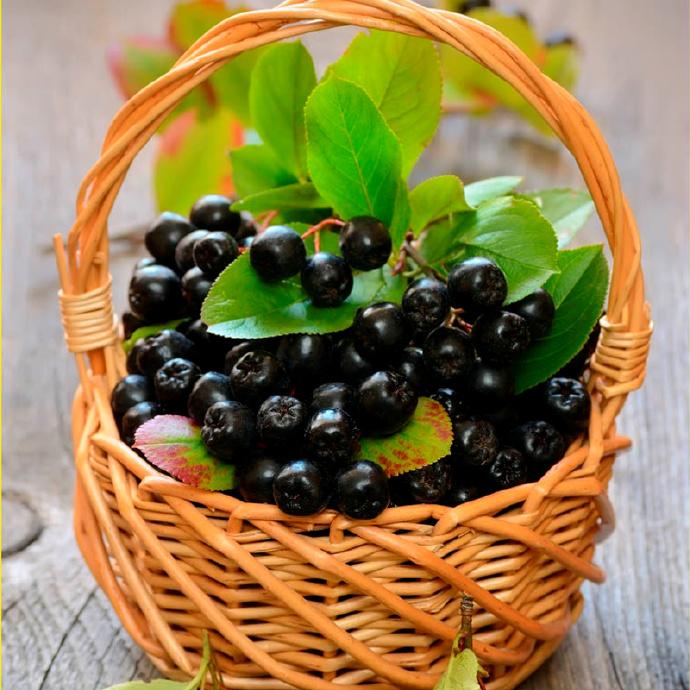
Temperature and Humidity
Black chokeberry has good tolerance for both the cold and hot temperatures of its growing zones. It flowers fairly late in the spring to avoid frost. But if there happens to be a late frost, this can damage the blooms and affect later fruiting for that growing season. So if your area does expect frost when your shrub is in bloom, consider covering the shrub with a sheet to protect it. Moreover, humidity typically isn’t an issue for the shrub as long as there is good air circulation around the foliage to prevent fungal diseases.
Fertilizer
Black chokeberry likely won't need supplemental fertilization unless you have nutrient-deficient soil. You can mix compost into the soil when you plant your shrub to give its growth a boost. Then, each spring apply a light layer of compost for continued healthy growth.
Black Chokeberry Varieties
There are several varieties of black chokeberry that vary slightly in appearance, including:
‘Autumn Magic’: This shrub has a more compact growth habit than the main species plant but with large clusters of fruit.
‘Iroquois Beauty’: This variety also has a compact growth habit and features particularly vivid fall color.
‘Viking’: This variety is known for its large black fruit and also sports vivid fall color.
‘McKenzie’: This is a tall variety that can grow up to 12 feet.
Pruning
Besides removing suckers around the base of the shrub as needed to prevent unwanted new shrubs from growing, pruning will not be an extensive chore for the black chokeberry shrub. After the plant is done flowering in the spring, lightly prune the stems to shape the shrub to your liking. Also, remove any dead, damaged, or diseased portions of the shrub as you spot them.

Botanical Name Aronia melanocarpa
Common Names Black chokeberry, aronia berry, aronia, chokeberry
Plant Type Shrub
Mature Size 3–6 ft. tall and wide
Sun Exposure Full, partial
Soil Type Well-drained
Soil pH Acidic
Bloom Time Spring
Flower Color White
Hardiness Zone 3–8 (USDA)
Native Area North America
Black Chokeberry Care
This shrub is highly adaptable and hardy. It can grow well in both moist and dry locations. Plus, ideally the soil pH should be acidic, but it can also grow in alkaline soil. And while it prefers soil that drains well, it is also tolerant of boggy soil. You can take advantage of the adaptability of black chokeberry when deciding how to use it in the landscape. For example, its tolerance of boggy soil makes it an excellent choice for wet areas where many other plants refuse to grow.
Because black chokeberry is so tolerant to many different growing conditions, it also tends to readily spread in the landscape. If you don't want multiple shrubs forming a thicket, you will have to monitor for and remove suckers around the base of the plant from which new plants with grow. Other than that, maintenance is very low for this shrub, as it will mostly take care of itself. It also generally doesn't have any major problems with pests or diseases. Plan to water during dry spells and prune annually to maintain its shape.
Light
You can plant a black chokeberry shrub in either full sun or partial shade. But you will get the best flowering and fruiting in locations with full sun, meaning at least six hours of direct sunlight on most days. In too much shade, the shrub will likely only minimally flower and fruit, and it will produce weak growth that ultimately could kill the plant.
Soil
A virtue of this shrub is how adaptable it is to a wide range of soils. It can tolerate both sandy and clay soil, though it prefers to grow in something in between those two. It also can handle some salt in the soil, making it a good option for a site near roadways that use road salt.
Water
Black chokeberry has moderate water needs. It can tolerate both the occasional drought and occasional flooding. But during prolonged dry spells and during particularly hot weather, it is ideal to give your shrub some water.

Temperature and Humidity
Black chokeberry has good tolerance for both the cold and hot temperatures of its growing zones. It flowers fairly late in the spring to avoid frost. But if there happens to be a late frost, this can damage the blooms and affect later fruiting for that growing season. So if your area does expect frost when your shrub is in bloom, consider covering the shrub with a sheet to protect it. Moreover, humidity typically isn’t an issue for the shrub as long as there is good air circulation around the foliage to prevent fungal diseases.
Fertilizer
Black chokeberry likely won't need supplemental fertilization unless you have nutrient-deficient soil. You can mix compost into the soil when you plant your shrub to give its growth a boost. Then, each spring apply a light layer of compost for continued healthy growth.
Black Chokeberry Varieties
There are several varieties of black chokeberry that vary slightly in appearance, including:
‘Autumn Magic’: This shrub has a more compact growth habit than the main species plant but with large clusters of fruit.
‘Iroquois Beauty’: This variety also has a compact growth habit and features particularly vivid fall color.
‘Viking’: This variety is known for its large black fruit and also sports vivid fall color.
‘McKenzie’: This is a tall variety that can grow up to 12 feet.
Pruning
Besides removing suckers around the base of the shrub as needed to prevent unwanted new shrubs from growing, pruning will not be an extensive chore for the black chokeberry shrub. After the plant is done flowering in the spring, lightly prune the stems to shape the shrub to your liking. Also, remove any dead, damaged, or diseased portions of the shrub as you spot them.
0
0







